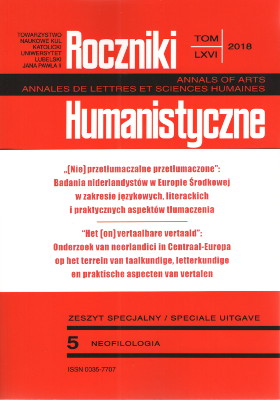Taal, cultuur en vertaling: Een semiotische benadering
Language, culture, and translation: A semiotic approach
Author(s): Ludo BeheydtSubject(s): Language and Literature Studies, Foreign languages learning, Translation Studies
Published by: Towarzystwo Naukowe KUL & Katolicki Uniwersytet Lubelski Jana Pawła II
Keywords: translatability; semiotic theory; semiosis; semiotranslation; culture
Summary/Abstract: The dilemma with translation of cultural elements and with the relation of word and image in plurimodal texts, led to the choice of a semiotic theory of translation. In a semiotic approach culture is considered as a web of signs in which texts are an embedded subsystem. Semiotically, translation is primarily the transmission of a cultural artefact into another cultural system of signs. Unfortunately, this simplified vision ignores the translator as an active interface. Charles Sanders Pierce had rightly introduced a triadic sign representation (1985, 5) in which an adequate role is attributed to the translator who translates the sign into another system of signs, thus creating permanent cultural mobility. Semiotically, translation is an act of cultural identity formation. Semiosis may be executed exoticisingly or naturalisingly, but it remains an irreversible unidirectional process. Ultimately, a translation is an intercultural symbiotic construction.
Journal: Roczniki Humanistyczne
- Issue Year: 66/2018
- Issue No: 5S
- Page Range: 155-167
- Page Count: 13
- Language: Dutch

